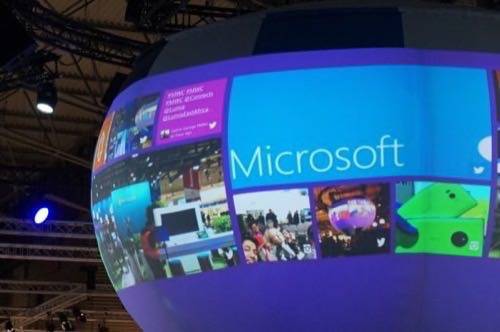
Microsoft needs developers to build apps for its platform, and its play to get them—by helping coders port iOS and Android apps to Windows—just took a big step forward: On Thursday, the Redmond, Washington–based tech company released its iPhone app porting tool, Windows Bridge for iOS, as an open-source public preview.
The company knows that attracting mobile app makers can be an uphill climb. With the new tool, Microsoft hopes to encourage more support by offering a simple way to make Windows apps out of existing apps. Android developers also get Windows Bridge for Android, which is now available through a private beta.
The premise of these tools is to let developers reuse much of what they’ve already built, reducing complexity.
See also: Windows Wants Apps! Specifically, Android And iOS Apps
However, Microsoft warns that the bridge is not finished yet. In other words, don’t be surprised if it’s buggy or missing some promised features. That’s actually a key reason it chose to open-source Bridge for iOS, so developers can contribute to the project and help ensure that a polished version debuts this fall (when its new Visual Studio update launches).
Here are few other things app builders should know about the new Microsoft tool.
5 Things To Know About Windows Bridge For iOS

1. You can explore, but not release: Developers can immediately start working with Windows Bridge for iOS, formerly known as “Project Islandwood.” However, since it’s a preview, they can’t launch their results just yet.
2. It’s transformation, not transference: When it comes to cross-compatibility, tech makers have different approaches. Some, like BlackBerry, can run apps made for other platforms, like Android. Microsoft has a different goal with its bridges: to make it easier for developers to transform their existing iPhone or Android apps into Windows apps. Put another way, iOS and Android apps won’t run on Windows, and the bridges do not change that.
3. iOS developers can use the code they know: Microsoft promises that developers can use fundamental Windows APIs (application programming interfaces) with Objective-C code. In other words, the iOS and Windows developer tools should be compatible.
4. It doesn’t cover Windows everywhere quite yet: The tool allows developers to support both Windows 8.1 and Windows 10 (with x86 and x64 architectures, which refer to the kind of chip the OS runs on). Eventually, it will also cover ARM processors, which is key for mobile devices like smartphones.
5. What the tools include: The bridge covers four essentials: the Objective-C compiler, Objective-C runtime, iOS API headers and libraries, and the ability to bring Xcode projects directly into Visual Studio 2015.
Windows Bridge for iOS is now available, so you can grab the code through an open-source GitHub project under the MIT license.
At its Build conference earlier this year, Microsoft told developers it would help them bring existing apps from rival platforms. Bridge is obviously the company’s way of following up on that pledge. To learn more about it, check out the GitHub link above for technical details, or view the Build video for more information.
Lead photo by Adriana Lee for ReadWrite; Windows photo by Urs Steiner










